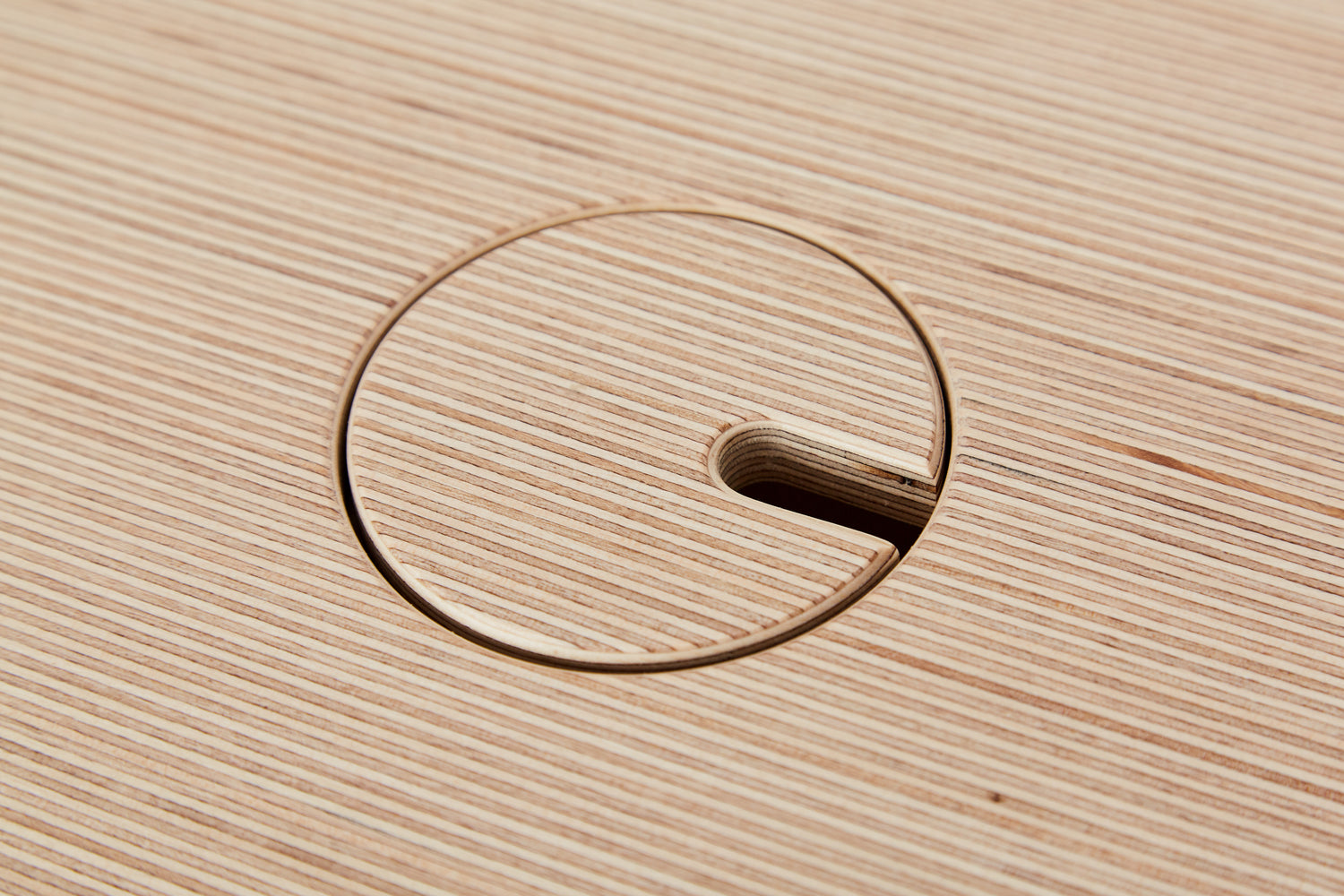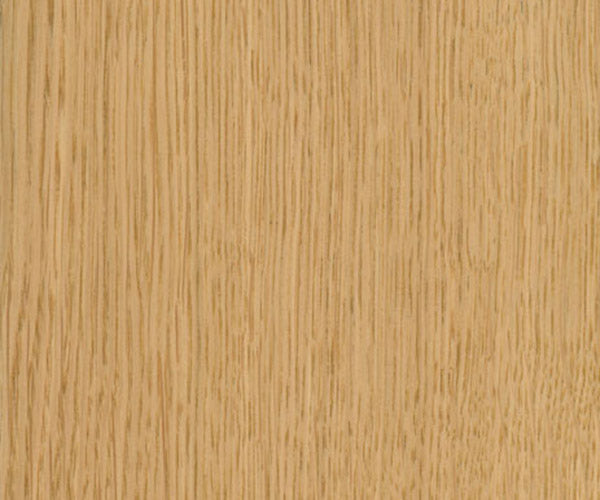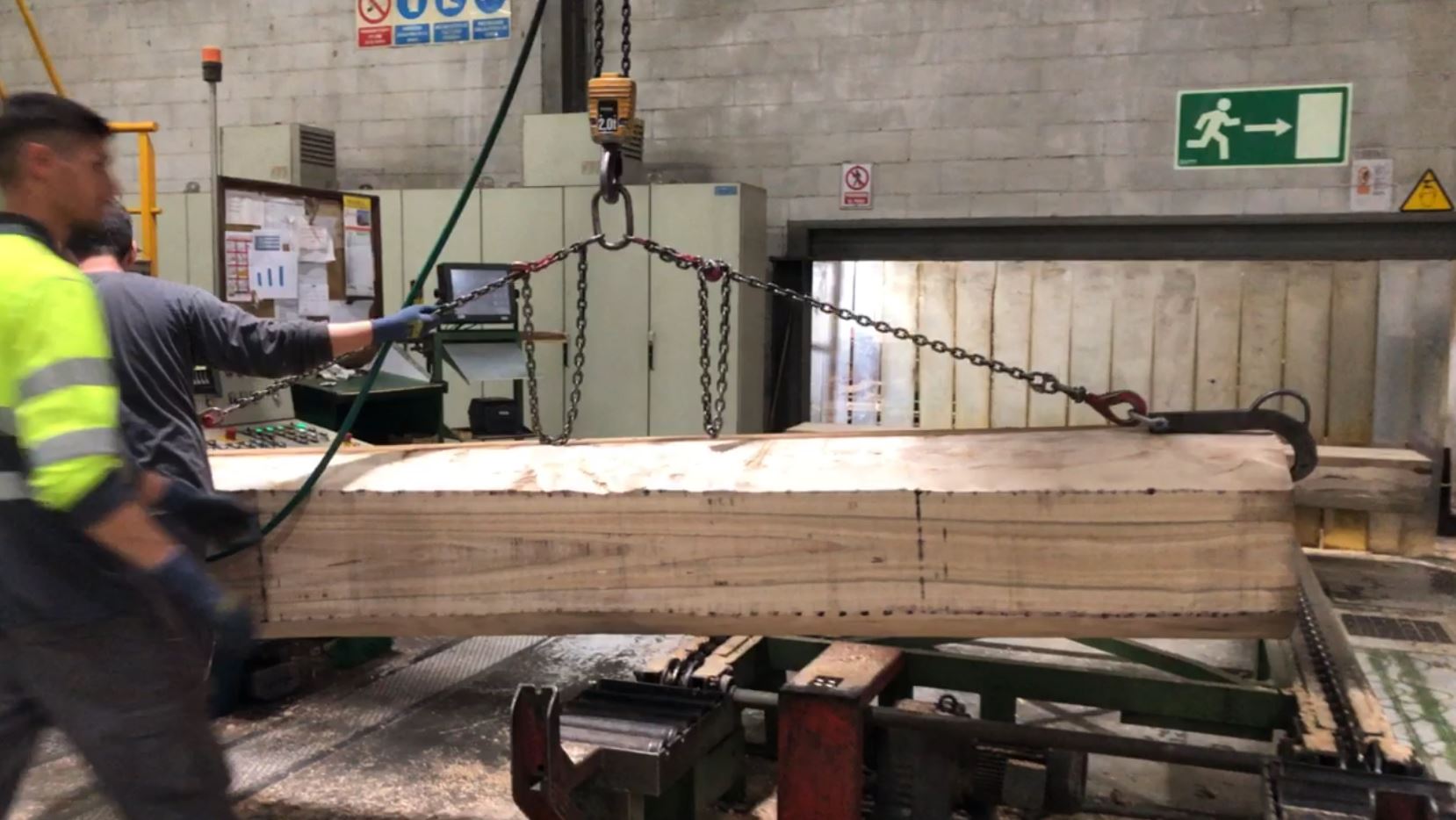Reconstituted veneer, also known as engineered veneer or man-made veneer, is a type of veneer that is manufactured using various techniques to replicate the appearance of natural wood veneer. It is often created from fast-growing and more sustainable wood species, making it an environmentally friendly alternative to traditional wood veneer. Here's how reconstituted veneer is typically made and some of its benefits:
Manufacturing Process:
-
Raw Material Selection: Reconstituted veneer is typically made from fast-growing trees like poplar, ayous, or eucalyptus. These trees are chosen for their uniform texture and colour.
-
Slicing: Logs are sliced into thin sheets, similar to how natural veneer is produced. These sheets are typically thicker than those used for natural veneer.
-
Dyeing: The sliced veneer sheets are dyed using water-based or solvent-based dyes to achieve a variety of colours and patterns, including imitating rare or exotic wood species.
-
Layering and Gluing: The dyed veneer sheets are layered to create the desired pattern. They are glued together using adhesive resins, typically under heat and pressure. This results in a single large veneer sheet with the desired colour and pattern.
-
Pressing and Curing: The layered veneer sheet is then pressed under heat to cure the adhesive, creating a solid and stable composite sheet.
-
Cutting and Sanding: The cured veneer sheet is cut into smaller sheets and sanded to achieve a smooth and even surface. The final thickness is usually consistent and can be adjusted according to the manufacturer's specifications.
Benefits:
-
Consistency: Reconstituted veneer offers a high degree of consistency in color, texture, and pattern. This can be especially useful for achieving a uniform look in large projects or across multiple pieces of furniture.
-
Cost-effective: Since reconstituted veneer can be produced from fast-growing trees, it is often more affordable than natural veneer made from rare or slow-growing wood species.
-
Sustainability: Using fast-growing trees helps reduce the pressure on slow-growing hardwood forests, contributing to more sustainable forestry practices.
-
Availability: Reconstituted veneer can mimic the appearance of rare and exotic wood species that might be difficult to source sustainably. This provides designers and manufacturers with more options.
-
Colour and Pattern Options: The dyeing process allows for a wide range of colour options, making it easier to match specific design requirements.
-
Stability: Reconstituted veneer tends to have better stability than natural veneer, as it is less prone to warping, cracking, or splitting due to the manufacturing process and the use of adhesive resins.
-
Versatility: Manufacturers can create custom patterns and designs, providing more creative freedom for designers and architects.
However, it's important to note that reconstituted veneer might not have the same depth and character as natural wood veneer, as it lacks the natural variations and imperfections found in real wood.





Leave a comment
All comments are moderated before being published.
This site is protected by reCAPTCHA and the Google Privacy Policy and Terms of Service apply.